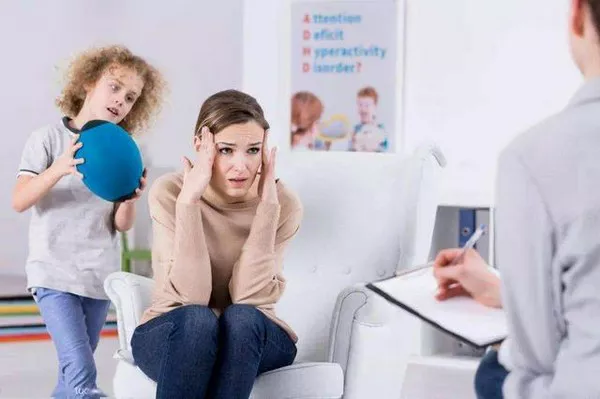In the vast landscape of human relationships, few bonds are as fulfilling as those formed between friends who are on the same wavelength. These friendships are marked by a deep, almost intuitive understanding and alignment between individuals. This article explores the concept of “same wavelength” friendships, delving into their characteristics, the psychology behind them, and their profound impact on our lives.
Defining Same Wavelength Friendships
The term same wavelength is often used to describe friendships where individuals feel an effortless connection and understanding with each other. These relationships are characterized by shared values, interests, humor, and perspectives, which create a sense of harmony and resonance.
1. Effortless Communication: In same wavelength friendships, communication flows naturally. Friends often find themselves finishing each other’s sentences or intuitively understanding unspoken thoughts and feelings. This ease of communication fosters a deeper connection and reduces the likelihood of misunderstandings.
2. Shared Interests and Values: These friendships are often built on a foundation of shared interests, hobbies, and values. Whether it’s a mutual passion for a particular activity or similar life philosophies, these commonalities create a strong bond.
3. Emotional Resonance: Emotional alignment is another hallmark of same wavelength friendships. Friends on the same wavelength empathize with each other’s emotions and experiences, providing mutual support and understanding.
4. Synchronicity in Humor: A shared sense of humor is a key component of these friendships. Laughing together strengthens the bond and makes the relationship more enjoyable and resilient.
The Psychology Behind Same Wavelength Friendships
Understanding the psychological underpinnings of same wavelength friendships can provide insights into why these relationships are so powerful and enduring.
1. Social and Emotional Intelligence: Individuals with high social and emotional intelligence are better equipped to form and maintain same wavelength friendships. These skills enable them to read social cues, understand emotions, and communicate effectively, which are essential for creating deep connections.
2. Similarity-Attraction Effect: The similarity-attraction effect is a psychological phenomenon where people are drawn to others who are similar to them. Shared interests, values, and personality traits enhance mutual attraction and foster a sense of belonging.
3. Mirroring and Empathy: Mirroring is a behavior where individuals subconsciously imitate each other’s gestures, expressions, and postures. This behavior enhances empathy and rapport, making friends feel more connected and understood.
4. Secure Attachment Styles: People with secure attachment styles are more likely to form same wavelength friendships. These individuals are comfortable with intimacy and trust, allowing them to build stable and supportive relationships.
The Benefits of Same Wavelength Friendships
The impact of same wavelength friendships extends beyond companionship; these relationships offer numerous psychological, emotional, and even physical benefits.
1. Emotional Support: Friends on the same wavelength provide invaluable emotional support. They offer a safe space for expressing feelings, sharing experiences, and seeking advice. This support is crucial during times of stress, uncertainty, or personal growth.
2. Increased Happiness and Well-Being: Having friends who truly understand and resonate with us boosts our overall happiness and well-being. These relationships contribute to a sense of fulfillment and contentment in life.
3. Enhanced Personal Growth: Same wavelength friendships encourage personal growth and self-improvement. Friends challenge each other to reach their full potential, offering constructive feedback and motivation.
4. Stress Reduction: The emotional security and understanding provided by these friendships help reduce stress and anxiety. Knowing that someone truly gets you and has your back can be incredibly reassuring.
5. Longevity and Health: Studies have shown that strong social connections are linked to better physical health and longevity. The support and positivity derived from same wavelength friendships can contribute to a healthier, longer life.
Cultivating Same Wavelength Friendships
While some friendships naturally develop on the same wavelength, there are ways to cultivate and strengthen these connections.
1. Authenticity: Being authentic and true to oneself is fundamental in forming same wavelength friendships. Genuine connections are built on honesty and vulnerability, allowing friends to understand and appreciate each other’s true selves.
2. Active Listening: Active listening involves fully engaging with what the other person is saying, without interrupting or judging. This practice fosters deeper understanding and strengthens the bond between friends.
3. Shared Experiences: Engaging in shared activities and experiences can enhance the connection between friends. Whether it’s traveling together, pursuing a hobby, or participating in meaningful conversations, shared experiences create lasting memories and deeper bonds.
4. Open Communication: Open and honest communication is key to maintaining same wavelength friendships. Discussing thoughts, feelings, and expectations openly can prevent misunderstandings and ensure that both friends are on the same page.
5. Empathy and Compassion: Cultivating empathy and compassion enhances emotional resonance in friendships. Understanding and validating each other’s feelings strengthens the emotional bond and creates a supportive environment.
Challenges in Same Wavelength Friendships
Despite their many benefits, same wavelength friendships can face challenges. Understanding these potential obstacles can help in navigating and maintaining these valuable relationships.
1. Changing Interests and Values: As individuals grow and evolve, their interests and values may change. These changes can create distance in a same wavelength friendship if not addressed through open communication and mutual respect.
2. Time and Distance: Physical distance and busy schedules can strain even the closest friendships. Maintaining regular contact and finding creative ways to stay connected can help overcome these challenges.
3. Misunderstandings and Conflicts: No friendship is immune to misunderstandings and conflicts. Addressing issues promptly and constructively through honest communication is crucial for preserving the bond.
4. Dependency and Boundaries: While emotional support is a cornerstone of same wavelength friendships, it’s important to maintain healthy boundaries and avoid dependency. Ensuring that both friends have a balanced and reciprocal relationship is essential for its longevity.
Case Studies: Same Wavelength Friendships in Action
Examining real-life examples of same wavelength friendships can provide valuable insights into how these relationships function and thrive.
1. Historical Friendships: The friendship between C.S. Lewis and J.R.R. Tolkien is a classic example of a same wavelength friendship. Their shared interests in literature, mythology, and faith created a deep bond that significantly influenced their respective works and personal lives.
2. Celebrity Friendships: The bond between Oprah Winfrey and Gayle King is often cited as a prime example of a same wavelength friendship. Their mutual support, shared experiences, and deep understanding of each other’s lives have sustained their friendship for decades.
3. Everyday Friendships: Consider the friendship between two individuals who met in college and discovered a shared passion for social justice. Their similar values and commitment to activism have fueled a lifelong bond, marked by mutual support and collaboration on various projects.
Conclusion
Same wavelength friendships are among the most rewarding and fulfilling relationships we can experience. These friendships, characterized by deep understanding, shared interests, and emotional resonance, enrich our lives in countless ways. By cultivating authenticity, active listening, shared experiences, open communication, and empathy, we can build and maintain these valuable connections. Despite potential challenges, the profound benefits of same wavelength friendships make the effort to nurture them well worth it. In a world where genuine connections can sometimes be hard to find, these friendships stand as a testament to the power of human connection and the joy of finding kindred spirits.
Related topics:


















